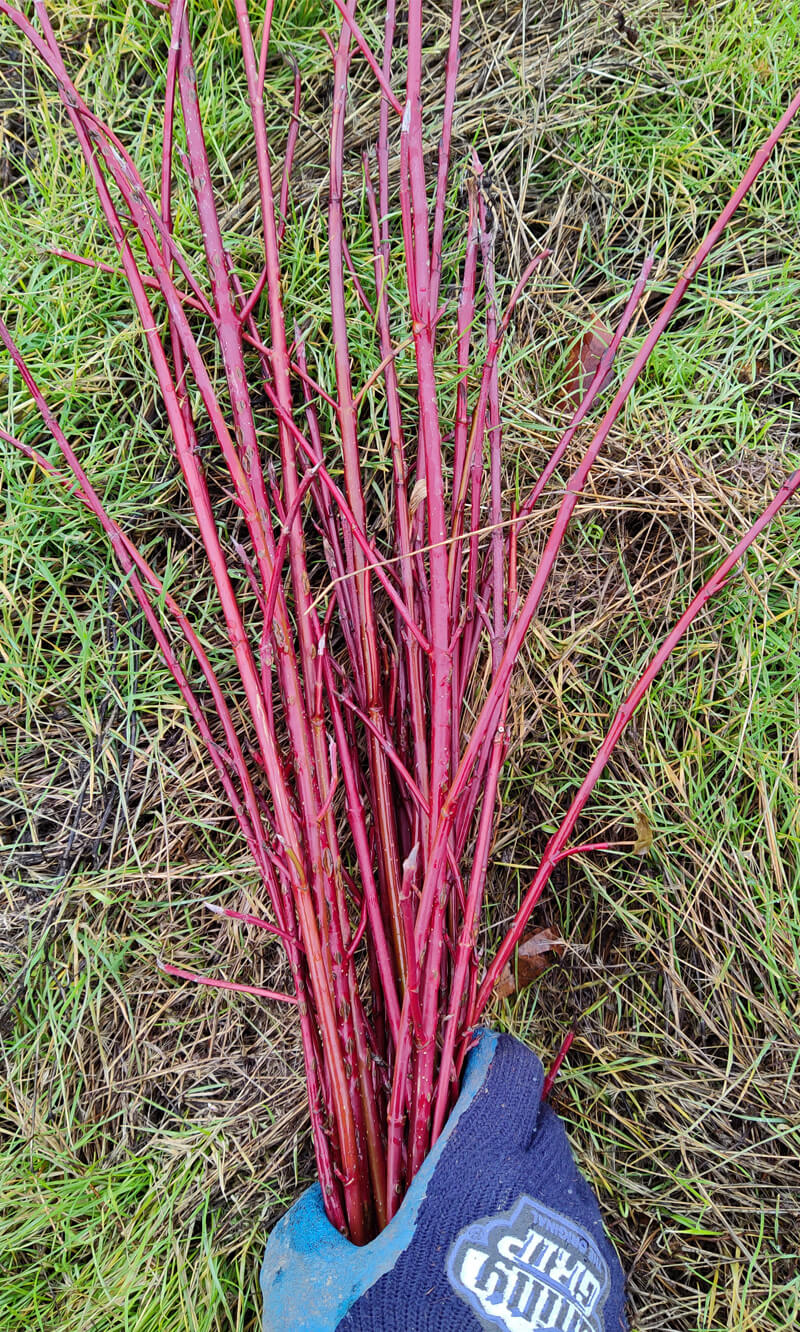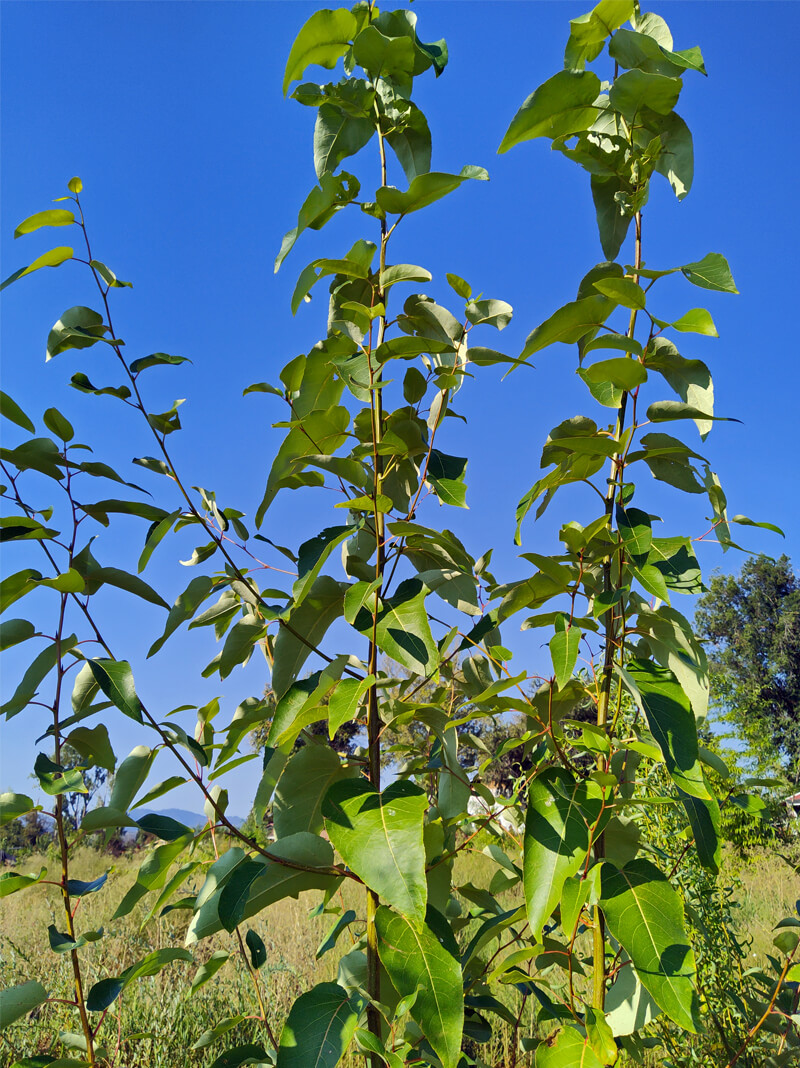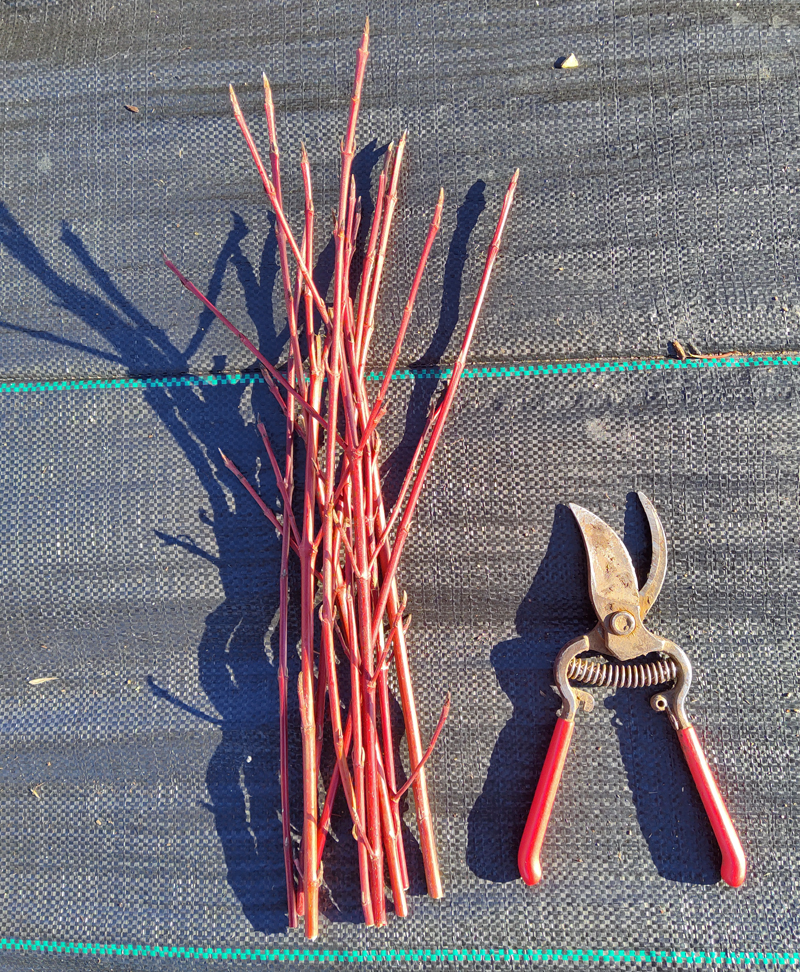Unrooted Cuttings
Some plant species like Willows, Poplars, Elderberries, and Creek Dogwoods can be consistently propagated from hardwood cuttings that are planted directly into the field during winter, rather than in humidity controlled rooting chambers. Unrooted cuttings are both significantly cheaper and easier to plant than rooted shrubs and trees and are frequently used for large scale plantings of easily rooted species. We offer unrooted cuttings from our stock plants of cultivars that can be field rooted with high success rates. We don't normally list cultivars that require humidity chambers and bottom heat but can often supply cuttings of these plants upon request.Planting Unrooted Cuttings
Sticking the Cuttings
Keep the unrooted cuttings moist until you are ready to plant them, you can leave them in their packaging in a cold location for 1-2 weeks.It is important to plant the cuttings upright, with the younger tip on top and the older end planted in the soil. All of the cuttings in a bundle will be facing the same way with the bottoms flush together. If a stem gets separated then you can identify the top by looking at the buds, the buds are above the leaf scar.
We leave room on the bottom of the cuttings for a fresh cut, right before planting give each unrooted cutting a fresh cut about 1/4 of an inch below the lowest node. The lowest node is where most of the roots will form so be sure to protect it from damage, be careful not to knock off the buds on the lowest node as the buds produce a good portion of the hormones that tell nearby tissue to produce roots. If both lower buds are knocked off you can make a new cut below the next node up the stem.
Prepare the planting hole with a pencil, dowel, or rod about 3 inches deep into the soil and then push the cutting in until it gets good contact on the bottom. Press the soil down around the cutting to close the edges of the hole around the stem. Watering after sticking is recommended to ensure good cutting to soil contact. Preparing the hole is not necessary if you have very loose or sandy soils. Rooting hormone is not usually required but can be beneficial if you have it available.
Timing
Unrooted cuttings are offered during the winter while the plants are dormant, typically from early December through February. It is best to plant the cuttings soon after harvest, and ideally before the end of February so that the cuttings have time to form roots before the top growth appears. For gardeners in cold climates with frozen soil it is recommended to stick the cuttings into a large container about an inch apart and three inches deep, and then put the container in a cold but protected location, like an unheated outbuilding so that the cuttings can begin to develop callus. As soon as the ground thaws stick the cuttings into the ground.After Care
Winter and spring rainfall is usually sufficient to keep the soil moist in wetter climates, but in some drier climates occasional irrigation may be necessary. It is important to not let the soil surface get too dry as this can cause the cuttings to dry out, but you don't want the soil to be soggy either as this can lead to rot. Moderately moist soil yields high success rates while overly wet or dry soils often result in poor success rates. In drier climates with sandy soils you can stick the cuttings about 5 inches deep instead of 3 to improve moisture retention. Tree tubes can also be quite beneficial in keeping the humidity higher around the top of the cuttings without restricting airflow, and this can also protect the cuttings from rodent damage if this is an issue in your area.Depending on the density of planting some trees may need to be thinned. Some projects stick cuttings at about the final desired density and in these cases the trees typically can be left alone once rooted. However, in high erosion areas cuttings are often stuck extremely close together so that the trees form a solid root mass immediately. As the trees grow the stands can be thinned until the plantings reach their desired density while maintaining good root coverage.




